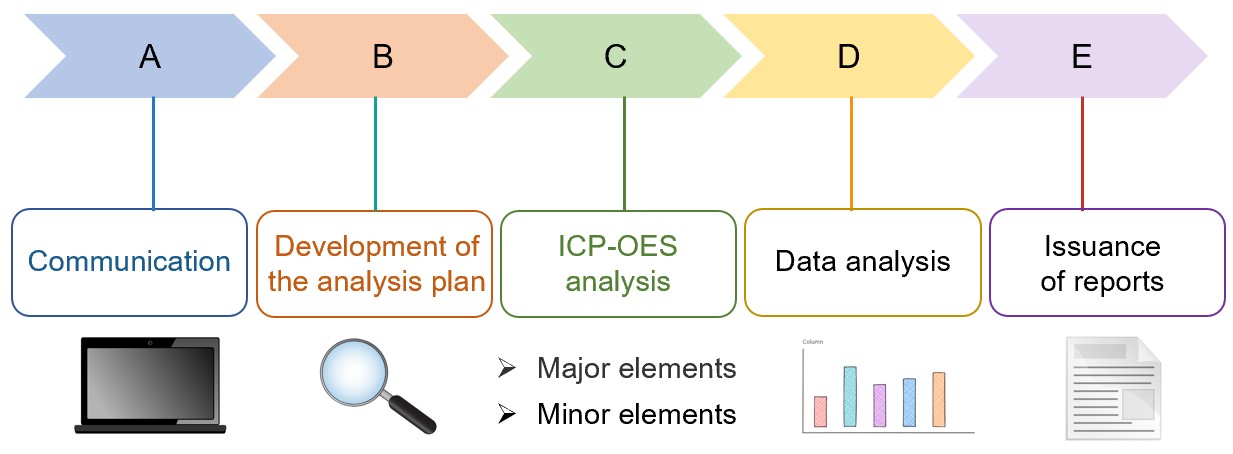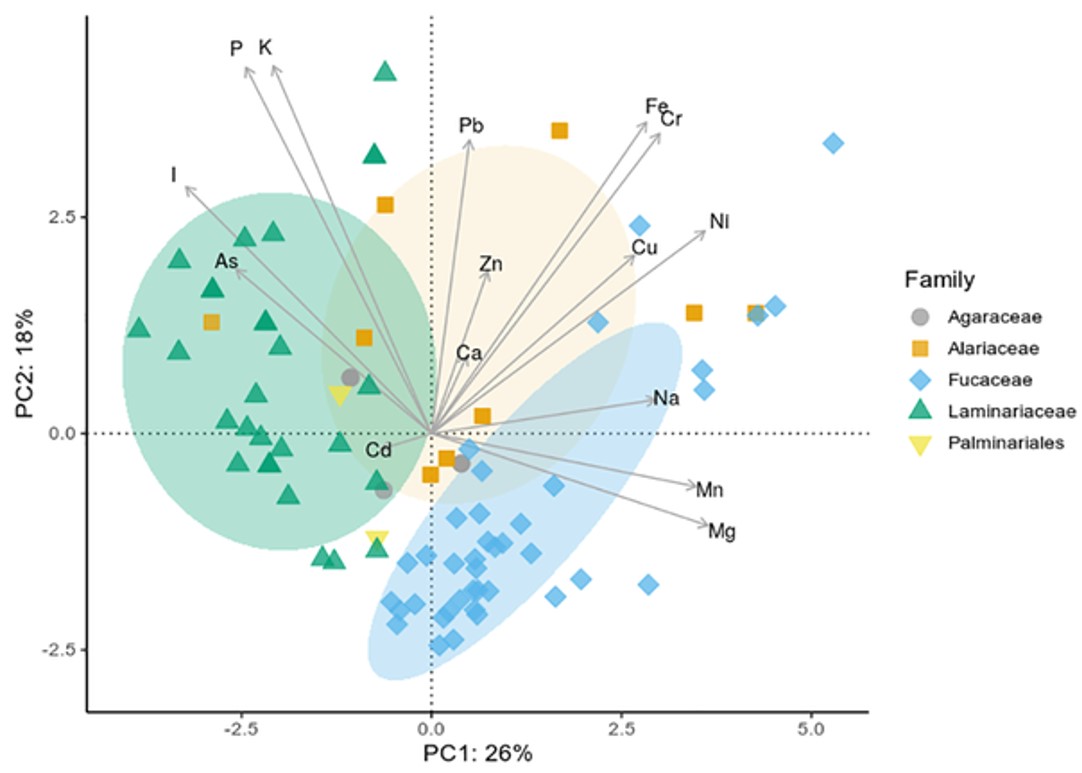Seaweed Multi-element Simultaneous Profiling Service
Our Reliable Multi-element (Major and Minor Element) Analysis Service
Creative Biolabs is constantly updating and optimizing our analysis techniques for Biomass such as Seaweeds to ensure that our clients are 100% satisfied with the analysis of Carbohydrates, Amino Acids, elements, etc. Seaweeds have a strong bioconcentration capacity and complex elemental content. We provide an efficient multi-element (major and minor element) analysis service for seaweeds. Our goal is to help various scientists and seaweed processors conduct scientific research on seaweeds in terms of nutritional value, composition, applications, etc.
Major and minor elements in seaweeds vary depending on the type of species, geographic region, and so on. Currently, there are various methods for elements. We accurately analyze the elements in seaweeds by inductively coupled plasma-optical emission spectrometer (ICP-OES).
It is a method that identifies the presence or absence of an element in a sample according to the presence or absence of a characteristic spectral line (qualitative analysis). It also determines the content of the corresponding element in the sample according to the intensity of the characteristic spectral lines (quantitative analysis). With low sample consumption, good selectivity, and low detection limit, ICP-OES has good advantages in the qualitative and quantitative analysis of many elements.
-
The type of element analyzed
We use ICP-OES to analyze the content of major and minor elements in seaweed. This method detects multiple elements in the sample simultaneously, greatly shortening our analysis cycle. The main elements analyzed include the following:
-
Major elements: Aluminum, silicon, sodium, calcium, iron, potassium, titanium, magnesium, and phosphorus.
-
Minor elements: Antimony, copper, cadmium, cobalt, arsenic, chromium, lead, molybdenum, manganese, nickel, vanadium, mercury, and zinc.
 Fig.1 Flowchart of major and minor element analysis.
Fig.1 Flowchart of major and minor element analysis.
Features of Multi-element Analysis Service
-
Deep professional accumulation: We have excellent analytical technology development and seaweed analysis strength, which provides more professional and suitable element analysis for our clients.
-
Simultaneous detection of multiple elements: Our analytical methods simultaneously determine multiple elements in a sample, greatly shortening the analysis cycle of major and minor elements in seaweed.
-
Perfect quality management system: We have a strict quality management system to ensure the integrity, authenticity, reliability, and traceability of analytical data.
Creative Biolabs is a leader in seaweed analysis and research. We provide a major and minor element analysis for seaweed with high efficiency and standards. Please feel free to contact us with your questions or needs if you are interested in our major and minor element analysis services.
Published data
Seaweed is a good source of minerals and iodine. However, in some cases, seaweeds may contain some harmful metals. To understand the elemental distribution of seaweeds from Greenland, this study investigated the contents of 17 elements (Fe, As, Ca, Na, Hg, I, K, Cd, Ni, P, Pb, Cr, Cu, Mn, Mg, Se, and Zn) in 10 species of seaweeds. The results showed that the distribution of elements within the same family exhibited similar elemental distributions that varied between species. Some species had high iodine contents. This study was important for seaweed collection, processing, and marketing in Greenland. Also, this study provided a demonstration for us to analyze various elements of seaweed.
 Fig.2 Elemental compositional analysis of Greenland seaweeds.1, 2
Fig.2 Elemental compositional analysis of Greenland seaweeds.1, 2
FAQs
Q1: Why is it important to analyze major and minor elements in seaweed?
A1: Seaweeds contain a variety of elements such as copper, silicon, sodium, calcium, iron, and potassium, which affect the quality and functional properties of seaweeds. Analyzing major and minor elements in seaweeds is essential to understanding the nutritional composition, potential applications, safety, and cultivation of seaweeds.
Q2: What factors affect the elemental composition of seaweeds?
A2: Both biotic (species of seaweeds) and abiotic factors (geographic location, environmental factors, etc.) affect the elemental composition of seaweeds. Understanding these factors is important for the accurate interpretation of major and minor element analysis results.
Customer Review
Doing the Service Effectively
"We were very satisfied with their major and minor element analysis service at Creative Biolabs. Their team was professional and the analysis reports were comprehensive. We had good communication throughout the process. They provided some valuable advice on our overall analysis of seaweed and patiently answered all our queries. They are truly client-centered."
Dedication to the Accuracy of Results
"We have done some work with Creative Biolabs to assess the quality of seaweed. Their major and minor element analysis service has greatly exceeded our expectations. We were particularly impressed with their dedication to accuracy and the timeliness of their results. Their work ethic of taking responsibility for every piece of data and result in the end was very reassuring."
References
-
Kreissig, Katharina J., et al. "Characterisation and chemometric evaluation of 17 elements in ten seaweed species from Greenland." PLoS One 16.2 (2021): e0243672.
-
Under Open Access license CC BY 4.0, without modification.
For Research Use Only.
Related Services

 Fig.1 Flowchart of major and minor element analysis.
Fig.1 Flowchart of major and minor element analysis.
 Fig.2 Elemental compositional analysis of Greenland seaweeds.1, 2
Fig.2 Elemental compositional analysis of Greenland seaweeds.1, 2

